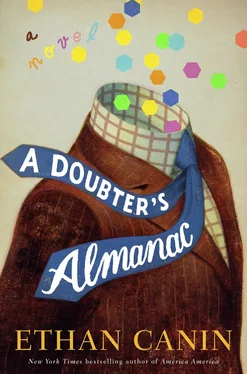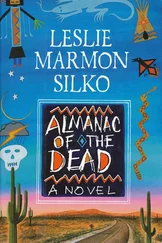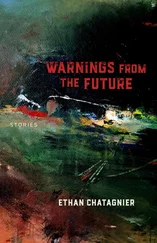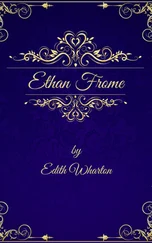Through the window I could see the top branches of the mulberry, under which we normally sat for my lessons. In the shade of that tree was where he’d taught me this very material several years earlier. “Well, for one,” I said, “I wouldn’t know what to do.”
“You wouldn’t, would you?” He looked out the window himself for a moment but quickly shifted his gaze to the door. Then he shifted it back to me. I could see that something was agitating him. His eyes jumped around as though they couldn’t decide how to look at anything. “Neither would I,” he said. “Not anymore.”
He raised his right arm from the sheets then and examined it. He’d been in the hospital for the good part of a month, and the arm itself looked like something that had fallen out of a rotting tree. My father at the time was not much older than fifty, but the flesh hung off the bone like a shirtsleeve. “Look at this,” he said. “Look at the fingers.”
He pointed them into the air. They were pale but otherwise appeared normal enough: chicken-bone knuckles, one of the digits bent slightly inward, as it always had been.
“What?” I said.
“You’re not looking.”
“The middle one’s bent?”
“It’s been that way since I was younger than you. Look closer.”
I leaned in. “Your hand’s shaking,” I finally said.
“That’s correct.”
“Can’t you stop it?”
“I probably could. But I find it riveting, don’t you? I want to explore the theory.”
“The theory?”
“The theory of human strangeness. Look at it, Hans.”
I did. Extending all the way up his arm was a shivering tremor, as though somewhere near his shoulder a clock motor had been sewn into the flesh. With the other hand he reached behind the mattress, came up with a bottle, and took a gulp. “This stops it,” he said. He held it up. “This is the cure.”
“I see.”
“But it’s running low.”
He let the arm drop and took another drink, then set the bottle back behind the headboard. For a time, we just sat there, staring out the windows. A few minutes later, when he raised the arm again, the tremor had stilled. “Hans,” he said. “I need your help.”
“Fuck you, Dad.”
“Fuck you, Son.”
We both laughed.
“What did you need me to do?”
“Never mind. Your mother wouldn’t approve anyway.”
I looked at him. Something in his face had changed during his stay in the hospital. Some aspect deeper than the purely physical. Whatever it was, it had occurred abruptly. He rubbed his brow, and when the arm came away, sweat showed on his hand. Since his return, the tilt of his outlook had somehow been reversed; he’d always been an introvert, yet his eyes had always looked unmistakably out at the world. Now they pointed inward. The pupils drifted this way and that.
“What did you need, Dad?”
“I said never mind.”
“Come on, I can do it.”
“It’s all useless,” he said. “Look at me. I’ve been possessed .”
He held up the hand again. The trembling had resumed.
“Watch this,” he said.
His wrist suddenly collapsed, then righted itself.
“Keep watching,” he said.
Within a few moments, the wrist collapsed again, then instantly straightened. And before long, it was performing a strange, half-steady dance, plunging suddenly and then righting itself, like a chicken pecking at corn. After a time, he let it fall to the mattress, but even in the sheets it wouldn’t quite stop. Finally, with a grunt, he rolled over and stilled it with his weight. Then he reached behind the pillows and brought out the bottle again.
—
MR. KIRPES DROVE us to Dayton. I sat in the front seat of the van with him, while, behind us, four seniors from advanced calculus lounged in their sandals. Mr. Kirpes bantered a little as he drove, mostly about the Bengals, who’d lost both games to the Browns that year. I knew nothing about sports, but you couldn’t live in southwest Ohio without acquiring at least a conversational knowledge of the Reds and the Bengals. Otherwise, the trip was silent. The boy behind me was practicing clarinet by looking at sheet music and playing it with his fingers, blowing through his embouchure and tapping his feet in rhythm, even though he had no clarinet with him. The drive took an hour. I’d made it several times before on our way to the art museum.
We arrived early at the University of Dayton. Mr. Kirpes bought us milkshakes at a drive-through, then dropped us off at the auditorium on the edge of campus. In the hallway outside the exam room, a crowd of kids milled about. I didn’t like being around other math whizzes. They were from all over the state, and they paced in the atrium or slouched on the floor by the entrance, flipping through flashcards and quizzing one another. I was at least five years younger than most of them, but I already knew that flashcards and quizzing would be of no help in what we were about to do. The kids who were studying for this kind of test had no chance.
When the bell rang and the auditorium doors finally opened, everyone pushed inside to get to the front-row desks. There must have been 150 people in there, every single one of them accustomed to being the smartest in the class. I made my way to the rear and took one of the last open chairs.
The test was ridiculously easy.
I’d figured it might be. There were a few questions on probability, a few on algebraic representation, and then a run of simple Euclidean figures. The first questions were truly elementary, and only after the middle section did they become even mildly involved. But whenever I looked up, I saw that plenty of the other kids were puzzled. The first part had been designed to encourage everyone, I realized, but this also had the effect of startling the weaker ones when the material picked up a notch. The last half-dozen problems at last grew tricky. By this point, several kids were looking off into the distance, only pretending to be thinking. One of them near me was in a jacket and tie, and he was putting on a show of loosening the tie so that he could see my answer sheet. On the second-to-last page, I figured out all four problems, then darkened all four answer boxes in one pass. Out of the corner of my eye, I saw him drop his head into his hands.
The thing was, I knew that there was a group of us in that room who were having a good time.
What I myself was enjoying most were the questions on number theory. In those days, I had particular affection for number theory because it seemed to have no practical application. Only a few cryptographers, a few pure mathematicians, and perhaps a few species of thirteen- and seventeen-year cicadas cared about things like prime numbers. And now I could add to this list the five or six other kids that I could sense around me in that auditorium radiating pleasure as we moved through the questions. There was a group of us, even in southern Ohio, who were in love with mathematics.
The last page contained a single problem:
Professor Gamble buys a lottery ticket, which requires that he pick six different integers from 1 through 46, inclusive. He chooses his numbers so that the sum of the base-ten logarithms of his six numbers is an integer. It so happens that the integers on the winning ticket have the same property — the sum of the base-ten logarithms is an integer. What is the probability that Professor Gamble holds the winning ticket?
(A) 1⁄5 (B) 1⁄4 (C) 1⁄3 (D) 1⁄2 (E) 1
I thought about it. If the sum of the logs of the professor’s numbers was an integer, then their product had to be an integer power of 10; since the prime factors of 10 were 2 and 5, then the six lottery numbers also had to have only 2 and 5 as prime factors. This left only 1, 2, 4, 5, 8, 10, 16, 20, 25, 32, and 40. Since the product of the smallest six of these numbers was greater than 10 3, and since there were only six factors of 5 on the list, the product of the winning numbers had to be either 10 4, 10 5, or 10 6. The rest was simple. There were only four possible combinations that would produce one of these exact products. Professor Gamble had a 1 in 4 chance of winning. The answer was B.
Читать дальше












